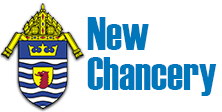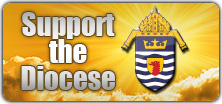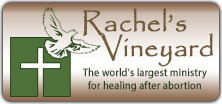ONE DIOCESE • ONE CHURCH
DISASTER RECOVERY
Frequently Asked Questions
September 12, 2022
1. When can parishioners expect repairs/rebuilding to be completed at church parishes and/or schools?
Recovery from Hurricane Laura (August 27, 2020) was in its beginning stages when, only six weeks later, Hurricane Delta (October 9, 2020) slammed into much of the same battered region. Then a winter ice storm in February of 2021 struck, and a few months later in May, residents suffered through yet another storm that included devastating flooding. With damage and destruction to more than 500 structures, valued at more than $135 million, recovery will be lengthy, requiring patience and hard work.
2. How many structures were damaged or destroyed? How many will be repaired or rebuilt?
A total of 72 Diocese of Lake Charles project sites were impacted by Hurricane Laura. More than 500 structures in the DOLC — including churches, schools, rectories, administrative and ancillary buildings — in five civil parishes were affected with an estimated $135 million in total damages.
3. What was the process for deciding to rebuild Sacred Heart of Jesus Catholic Church (Creole) in Sweetlake?
On the last weekend of October 2020, a post-hurricane Coastal Parish Survey was given to each family household attending Masses in Catholic Churches located in Cameron, Creole, Grand Chenier, Sweetlake, and Big Lake/Grand Lake areas for their input to help the Diocese make a sound decision. The survey — for parishioners living in Cameron Parish prior to Hurricane Laura — was also available online for those who evacuated but had been living in the affected church parishes prior to Hurricane Laura and were unable to get back to their homes.
There were two publicized town hall meetings held at the Grand Lake Community Center on Tuesday, September 29, 2020; and Thursday, October 1, 2020, to discuss and hear from the laity. Both meetings were productive and insightful.
The Catholic faithful were asked to submit their suggestions, thoughts, and concerns to Monsignor Daniel Torres, Vicar General, by November 15, 2020.
After gathering all the survey responses, emails, and consultation with the Presbyteral Council of the Diocese of Lake Charles, a recommendation was given to Bishop Provost. Overall, parishioners expressed regret that they had lost all their churches to the storm but understood that it might not be possible for all of them to be rebuilt due to lack of funding, population, support, etc., not to mention more destructive hurricanes.
The decision to amalgamate Our Lady Star of the Sea Catholic Church in Cameron, St. Eugene Catholic Church in Grand Chenier, and Sacred Heart of Jesus Catholic Church in Creole and relocate to Sweetlake was the logical choice given the elevation of the property. The new church will be built on Cameron Ridge, the highest point of elevation in Cameron Parish. Another benefit is that the property is owned by the Diocese of Lake Charles where St. Patrick’s Chapel stood.
Following Hurricane Rita in 2005, and Hurricane Ike in 2008, the only Masses on the coast for nearly six years were celebrated at St. Patrick’s Chapel, and people seemed accommodated to it. The current situation is similar.
The Decree of Amalgamation issued on January 8, 2021, may be found in its entirety at http://www.lcdiocese.org/3-news/3084-bishop-provost-issues-decree-on-coastal-parishes. Following the date of issue, a time period for appeal passed without any comments. The amalgamation was effective February 2, 2021.
4. Are Masses being celebrated in Cameron Parish?
Yes. Accommodations are available for Masses in Cameron Parish at the following locations:
- St. Mary of the Lake Catholic Church, 11054 Highway 384 (Big Lake) — Sunday: 10:00 a.m.; and Saturday Vigil, 4:00 p.m. NOTE: Masses are celebrated in the Church Hall.
- Sacred Heart of Jesus Catholic Church, East Cameron — Saturday Vigil, 4:00 p.m., 163 Mallard Lane, Creole (temporary location); Saturday Vigil, 5:30 p.m., 5657 Grand Chenier Highway, Grand Chenier (temporary location); Sunday, 8:00 a.m., St. Mary of the Lake Catholic Church, 11054 Highway 384 (Big Lake)
- St. Peter the Apostle Catholic Church, 1210 Main Street, Hackberry — Sunday, 8:00 a.m. and 4:00 p.m.; and Saturday Vigil, 4:00 p.m.
- Our Lady of the Assumption Catholic Church, 6470 Gulf Beach Highway — Sunday, 11:00 a.m.
5. How are projects given priority?
Necessity is what drives priority. For example, destroyed buildings are a priority. However, a parish may decide not to rebuild or to replace, or they might decide to rebuild and relocate. This is a decision made by the church parish.
6. Why are there delays in some projects?
Delays occur for many reasons. There are environmental issues, funding issues, legal questions, delays in delivery of construction material, issues with theft, and fulfilling government regulations for FEMA and other agencies. Delays also occur because of problems in obtaining certified contractors and skilled workers for projects.
7. How long will the Diocese be involved in the rebuild or recovery effort?
With damage and destruction to more than 500 structures, valued at more than $135 million, recovery will be lengthy, requiring patience and hard work. Recovery for this reason is a cooperative effort between the parishes, their pastors and parishioners, and the Diocese, which oversees the recovery.
8. What projects have been approved?
There are a total of 49 DOLC project sites where work is partially completed, under way, or major reconstruction is being planned and redesigned. There is active architectural design in progress at approximately 31 of these locations. The remaining only require scoping of repairs. There is a total of 10 DOLC sites where restoration is on hold, either because of low priority or ineligible for FEMA funding.
9. How many temporary facilities are being used for churches and/or schools?
As of August 1, 2022, at a total cost of $8,823,789.57, there are five temporary facilities in use for the following sites:
- Our Lady’s Catholic School in Sulphur
- St. Louis Catholic High School in Lake Charles
- St. Margaret Catholic School in Lake Charles
- Christ the King Catholic Church in Lake Charles
- storage for the Diocese of Lake Charles
Follow http://www.lcdiocese.org/3-news/3449-diocesan-recovery-update on the website for monthly expenditures and reimbursements.
10. How does the recovery process work?
Recovery is a cooperative effort between the parishes, their pastors and parishioners, and the Diocese, which oversees the recovery.
- At a local level (church parish level), the pastors in consultation with their parish leadership must make decisions. They must set priorities to rebuild, to replace, to repair, or do nothing. Each parish is unique.
- At the diocesan level, the Diocese coordinates the efforts of each parish and acts as a broker for funding, construction, and repairs. The Diocese is involved because funding for the recovery primarily comes from four sources: insurance, FEMA (Federal Emergency Management Agency) when applicable, charitable donations, and church parish funds.
- The Diocese hires consultants, ensures the accuracy of the recovery projects, and acts for the parishes in negotiations with insurance companies and government agencies. As a service to each parish, this role of the Diocese frees the parish to do what they are supposed to do. No one parish has the resources to handle funding, government regulation, selection of contractors and architects, negotiations with insurance companies and any legal consequences.
- Each pastor is expected to communicate recovery developments with his parishioners.
11. Wouldn’t it be faster for each parish to handle the repairs instead of having to wait on the Diocese to take care of everything?
Having the Diocese supervise recovery is advantageous to the parishes for several reasons:
- Efficiency in negotiating with insurance companies and government agencies.
- Coordination of group work for all concerned.
- Avoidance of unnecessary duplication.
- Creation of a united response for issues that arise.
- Grouping of smaller repairs to attract bids for work.
- Liability.
12. Why is FEMA (Federal Emergency Management Agency) involved in the process since the Diocese of Lake Charles had insurance?
The Diocese was under-insured at $30 million coverage for “name storm limit” in 2020 primarily because actuarial studies conducted by the insurance company indicated that the likelihood of two named storms of such magnitude occurring in the same hurricane season was negligible, if not impossible.
Also, since Hurricane Harvey in 2017, FEMA broadened the scope of eligibility for coverage. The Diocese of Lake Charles is following federal and state law guidelines without receiving any special privileges. FEMA reimbursements are made at a 90 percent federal cost-share.
13. How much “named storm limit” coverage does the Diocese of Lake Charles currently have? What is their coverage limit for flood insurance?
The Diocese partners with the Catholic Mutual Group to obtain insurance coverage. The current named storm limit coverage is $75 million per year. This is an increase of $45 million annually from the year 2020 when hurricanes Laura and Delta hit.
Flood insurance is provided by the National Flood Insurance Program (NFIP) and managed by the Federal Emergency Management Agency. FEMA’s rating methodology, Risk Rating 2.0: Equity in Action, considers specific characteristics of a building to provide a more modern, individualized, and equitable flood insurance rate based on the building’s unique flood risk and associated premium. It varies by location.
















